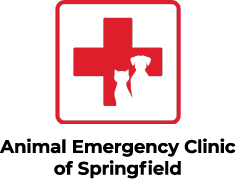Library
-
There are many methods and opinions described by various people to tame and train birds. This handout is designed to give some guidance to you during this process. Your patience may be strained, and you may sustain some bites, but the rewards of your new relationship with your bird will be fulfilling and long-lasting.
-
Tamsulosin is a medication used as a lower urinary tract relaxant to treat functional urinary obstructions in cats and dogs. It has also been used to treat small obstructive urinary stones in cats. Tamsulosin comes in capsule form; capsules should not be crushed or compounded into liquid.
-
Tapeworms are parasites that infect the gastrointestinal tract of cats, other animals, and humans. Several types of tapeworms are known to infect pets, but the most common species observed in cats is Dipylidium caninum, which is transmitted through fleas. Risk factors, clinical signs, treatment, and prevention are explained in this handout. Other, less common types of tapeworms that affect cats and humans are also covered.
-
Tapeworms are parasites that infect the gastrointestinal tract of dogs, other animals, and humans. Several types of tapeworms are known to infect pets, but the most common species observed in dogs is Dipylidium caninum, which is transmitted through fleas. Risk factors, clinical signs, treatment, and prevention are explained in this handout. Other, less common types of tapeworms that affect dogs and humans are also covered.
-
Taurine is given by mouth in the form of a capsule, tablet, powder, or liquid and is used as an over the counter nutritional supplement to treat taurine deficiency, dilated cardiomyopathy, and prevent retinal degeneration. Give as directed by your veterinarian. Side effects are rare but may include vomiting. There are no known contraindications to using this supplement. If a negative reaction occurs, please call your veterinary office.
-
Taurine is a type of amino acid. Amino acids are the building blocks of all proteins. Taurine is an essential amino acid for cats. Taurine deficiency leads to feline taurine retinopathy, a weakening of the muscle cells in the heart (dilated cardiomyopathy) and may cause digestive disturbances. Since the 1980s, all cat diets are supplemented with enough taurine to meet the normal cat's needs. A healthy cat that eats a high-quality cat food that is appropriate to its life stage does not require supplementation. Supplemental taurine is used as a treatment for dilated cardiomyopathy in cats.
-
Deafness does not affect a cat's learning abilities, but it does impact what kinds of cues they can learn. The keys to success are choosing a set of consistent signs and signals and learning what the cat finds rewarding. Deaf cats need special supervision such as leashing or a catio if allowed outdoors, and may startle more easily than cats that can hear, but otherwise can be trained with all the same methods used for a cat with normal hearing.
-
Deafness does not affect a dog's learning abilities, but it does impact what kinds of cues they can learn. Two keys to success are choosing a set of consistent signals and learning what the dog finds rewarding. Deaf dogs need special supervision such as leashing and safe fencing and may startle more easily than dogs that can hear, but otherwise can be trained with all the same methods used for a dog with normal hearing.
-
"Drop it" is an important life skill for dogs. Playing fetch can be more fun when your dog releases the toy for you to toss. A "drop it" cue can be a life-saver if your dog ever gets hold of something that could hurt him. "Drop it" can be easily trained using positive-reinforcement methods.
-
Nebulization and coupage are used in patients with a variety of lung conditions and can be performed by veterinary staff and pet owners. Nebulization may be used to deliver a variety of medications to the lungs, in cases of infection, allergic lung disease, or other lung conditions. Coupage is often recommended for patients with pneumonia or bronchitis.

